GN Hearing A S DA312R Wireless Hearing Instrument User Manual corrected
GN Hearing A/S Wireless Hearing Instrument corrected
User manual corrected
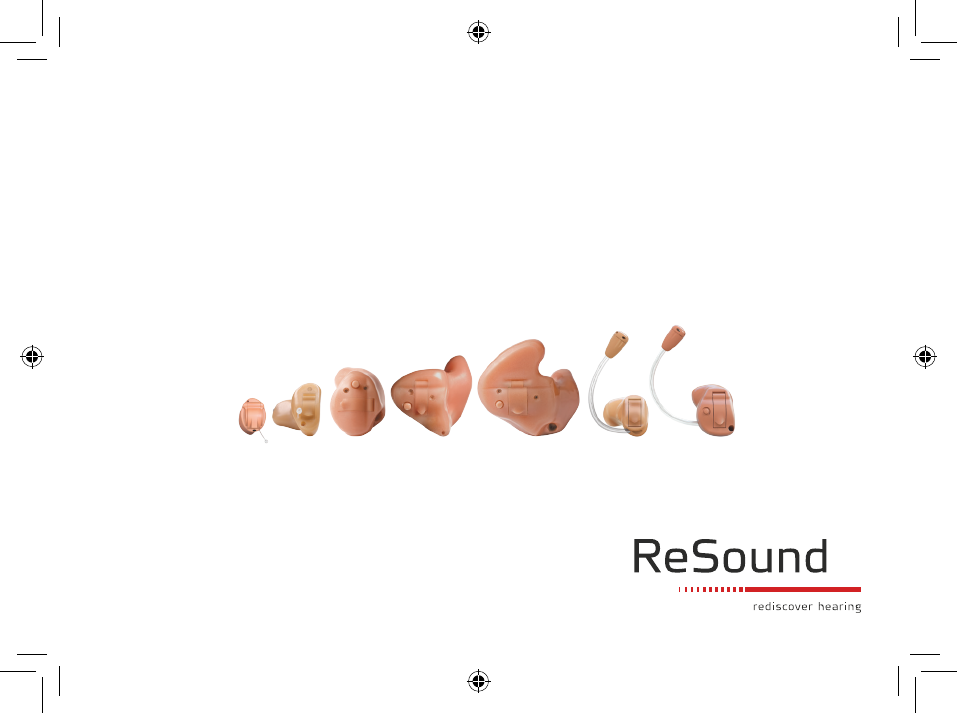
USER GUIDE
CUSTOM HEARING INSTRUMENTS
400332000-GB-14.10-Rev.A.indd 1 19-11-2014 12:48:23

2
Hearing instrument type designations for models included in this user guide are: DA312r, FCC ID:
X26DA312R, IC: 6941C-DA312R; DA13r, FCC ID: X26DA13R, IC: 6941C-DA13R; DA312i, FCC ID:
X26DA312I, IC: 6941C-DA312I; and DA13i, FCC ID: X26DA13I, IC: 6941C-DA13I. Please see page 10, 12
and 14 for lists of models referring to these types.
Statement:
This device complies with part 15 of the FCC rules and ICES-003 of the IC rules.
Operation is subject to the following two conditions: (1) this device may not cause harmful inter ference,
and (2) this device must accept any interference received, including interference that may cause undesired
operation.
Note: This equipment has been tested and found to comply with the limits for a Class B digital device, pur-
suant to part 15 of the FCC Rules and ICES-003 of the IC rules. These limits are designed to provide rea-
sonable protection against harmful interference in a residential installation. This equipment generates, uses
and can radiate radio frequency energy and, if not installed and used in accordance with the instructions,
may cause harmful interference to radio communications. However, there is no guarantee that interference
will not occur in a particular installation. If this equipment does cause harmful interference to radio or televi-
sion reception, which can be determined by turning the equipment off and on, the user is encouraged to try
to correct the interference by one or more of the following measures:
•Reorient or relocate the receiving antenna.
• Increase the separation between the equipment and receiver.
•Connect the equipment into an outlet on a circuit different from the one in which the receiver is con-
nected.
•Consult the dealer or an experienced radio/TV technician for help.
400332000-GB-14.10-Rev.A.indd 2 19-11-2014 12:48:23

3
Changes or modifications can void the user´s authority to operate the equipment.
Intended use
Generic air-conduction hearing instruments are wearable sound-amplifying devices intended to compen-
sate for impaired hearing. The fundamental operating principle of hearing instruments is to receive, amplify,
and transfer sound to the ear drum of a hearing impaired person.
The products are in compliance with the following regulatory requirements:
•In the EU: the device conforms to the Essential Requirements according to Annex I of Council Directive
93/42/EEC for medical devices (MDD) and essential requirements and other relevant provisions of Direc-
tive 1999/5/EC (R&TTE).
•The declaration of conformity may be consulted at www.resound.com
• In US: FCC CFR 47 Part 15, subpart C.
•Other identified applicable international regulatory requirements in countries outside the EU and US.
Please refer to local country requirements for these areas.
• In Canada: these hearing instruments are certified under the rules of IC.
•Japanese Radio Law and Japanese Telecommunications Business Law Compliance. This device is
granted pursuant to the Japanese Radio Law (電波法) and the Japanese telecommunications Business
Law (電気通信事業法) This device should not be modified (otherwise the granted designation number
will become invalid).
•Patents:
US 7,593,537 US 8,00,849
400332000-GB-14.10-Rev.A.indd 3 19-11-2014 12:48:23

4
Introduction
Congratulations on the purchase of your new hearing instruments. ReSound’s innovative sound technology
and design, combined with the customised device programming selected by your hearing care profes-
sional, will make hearing a more enjoyable experience. Hearing instruments will enable you to hear sounds
that you may not have heard in years because of your hearing loss. Practice and a positive attitude are
important in learning to use hearing instruments. Your ReSound instruments have been adjusted according
to your individual hearing loss and needs. Some people adjust quickly to wearing hearing instruments in
their ears and hearing new sounds; other people may need more time.
This product is a custom-made device.
Please read this manual carefully in order to wholly benefit from the use of your hearing instruments. With
proper care, maintenance, and usage, your hearing instruments will aid you in better communication for
many years. Ask your hearing care professional if you have any questions.
ReSound is a registred trade mark of ReSound A/S
400332000-GB-14.10-Rev.A.indd 4 19-11-2014 12:48:23
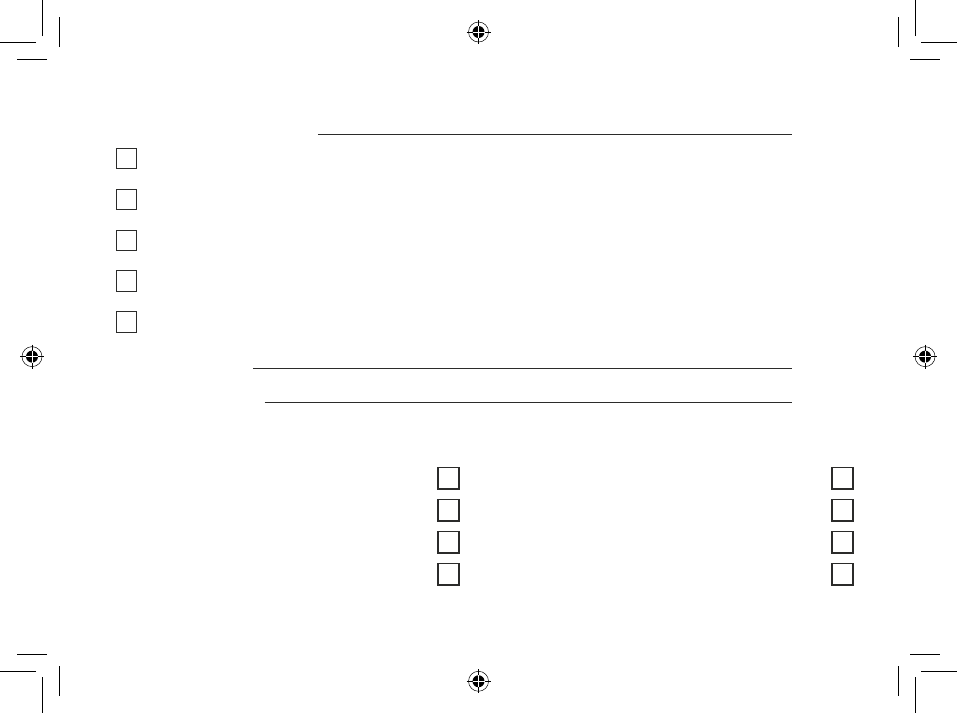
5
Hearing instrument model:
Model CIC: Battery size 10
Model IIC: Battery size 10
Model ITC: Battery size 13 or 312 (circle one)
Model ITE: Battery size 13 or 312 (circle one)
Model MIH: Battery size 13, 312, or 10 for MIH-S (circle one)
Left serial number:
Right serial number:
Smart Smart .....................16
Volume control ...................22
Program button...................23
Wireless ..................17, 25, 30
Phone Now ......................27
Tinnitus Sound Generator...........35
Telecoil/Tele-loop system ...........25
Power device-exceeds 132 dB SPL .....
Specific features supported by your hearing system:
Ask your hearing care professional to mark the options supported by your hearing system.
400332000-GB-14.10-Rev.A.indd 5 19-11-2014 12:48:23

6
Contents
Statement .............................2
Intended use ..........................3
List of countries ........................3
Introduction............................4
Specific features supported by your
hearing system .........................5
Description of the hearing instruments .......8
Getting started ........................14
On/Off function ........................14
SmartStart ...........................14
Inserting/Replacing the battery............15
Low battery indicator when paired with
wireless accessories only ................16
Inserting/removing hearing instruments .....17
Operation of the hearing instrument . . . . . . . . 20
Volume control (optional).................20
Programme button (optional) .............21
Flight mode...........................22
Telephone use.........................23
Telecoil ..............................23
Listen to radio or TV ....................24
Using ReSound Hearing Instruments with
iPhone®, iPad®, and iPod touch®.............24
Using ReSound hearing instruments with
smart phone apps . . . . . . . . . . . . . . . . . . . . . 24
Cellular phones .......................25
PhoneNow ...........................25
Tele-loop systems......................27
Care and maintenance ..................27
Daily maintenance......................28
Replacing wax filters ....................28
General precautions ....................29
General warnings ......................30
Intended use for the TSG module ..........32
Prescription use of this TSG hearing
instrument............................32
User instructions for the TSG module .......33
Important notice for prospective
sound generator users ..................33
The scientific concepts that form the
basis for the device.....................34
TSG warnings .........................35
400332000-GB-14.10-Rev.A.indd 6 19-11-2014 12:48:23

7
TSG precautions.......................35
TSG warning to hearing healthcare
professionals..........................36
Battery warning information ..............37
Hearing instrument expectations. ..........37
Warning to hearing aid dispensers .........38
Important notice for prospective
hearing aid users ......................38
Children with hearing loss................39
Troubleshooting guide ..................40
Technical data.........................44
Warranty and repairs....................45
Temperature test, transport and
storage information.....................45
400332000-GB-14.10-Rev.A.indd 7 19-11-2014 12:48:23

8
Mic in Helix (MIH-S) hearing instrument models
with size 10A battery are available in the following
variants:
LS9MIH-S UP, LS9MIH-S HP, LS9MIH-S MP,
LS9MIH-S LP, LS7MIH-S UP, LS7MIH-S HP,
LS7MIH-S MP, LS7MIH-S LP, LS5MIH-S UP,
LS5MIH-S HP, LS5MIH-S MP, LS5MIH-S LP
Mic in Helix (MIH) hearing instruments
(including type DA312r with FCC ID
X26DA312R, IC number 6941C-DA312R models
designated by a “W”) with size 312 battery and
Custom Mic in Helix hearing instruments
(including type DA13r with FCC ID X26DA13R, IC
number 6941C-DA13R models designated by a
“W”) with size 13 battery are available in the
following variants:
LS9MIH-W UP, LS9MIH-W HP, LS9MIH-W MP,
LS9MIH-W LP, LS9MIH UP, LS9MIH HP, LS9MIH
MP, LS9MIH LP, LS7MIH-W UP, LS7MIH-W HP,
LS7MIH-W MP, LS7MIH-W LP, LS7MIH UP, LS7MIH
HP, LS7MIH MP, LS7MIH LP LS5MIH-W UP,
LS5MIH-W HP, LS5MIH-W MP, LS5MIH-W LP,
LS5MIH UP, LS5MIH HP, LS5MIH MP, LS5MIH LP
400332000-GB-14.10-Rev.A.indd 8 19-11-2014 12:48:24
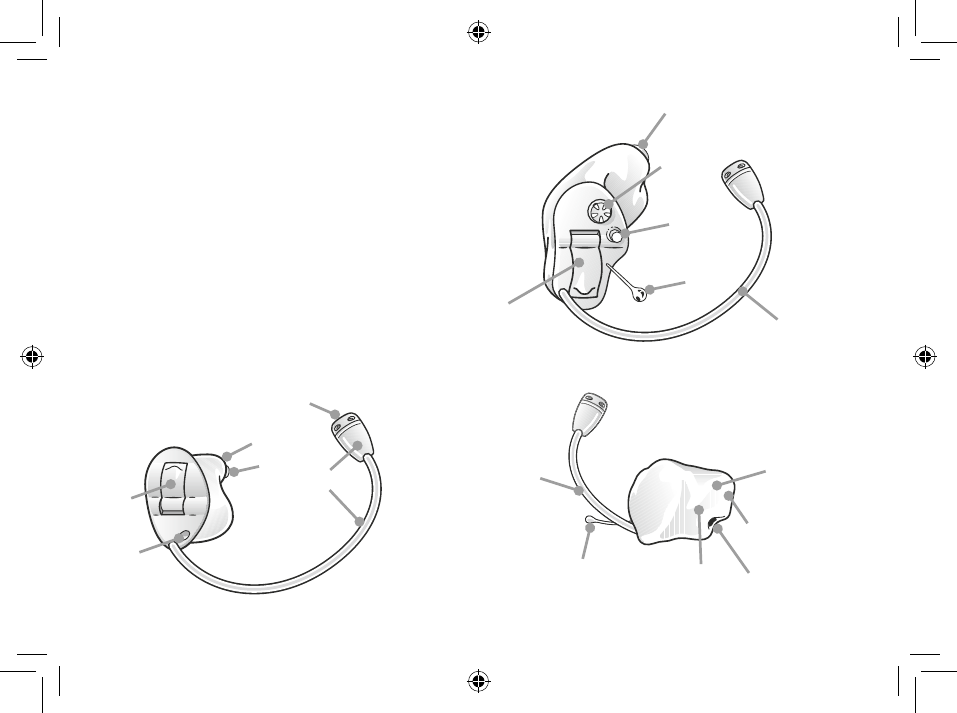
9
1. Programme button (optional)
2. Battery compartment and On/Off switch
3. Removal cord (optional)
4. Sound outlet
5. Wax filter
6. Vent
7. Microphone sound inlet
8. Remote microphone and tubing
(for remote microphone devices)
9. Volume control (optional)
10. Model
11. Manufacturer
12. Serial number
8
6
7
4
5
2
2
4
9
1
3
8
11
12
10
3
8
6
GN ReSound
ReSound Verso
XXXXXXX
400332000-GB-14.10-Rev.A.indd 9 19-11-2014 12:48:25

10
Invisible-in-the-canal (IIC) and
completely-in-the-canal (CIC) hearing
instruments with size 10A battery are available in
the following variants:
LS9IIC, LS7IIC, LS9CIC UP, LS9CIC HP,
LS9CIC MP, LS9CIC LP, LS7CIC UP,
LS7CIC HP, LS7CIC MP, LS7CIC LP, LS5IIC,
LS5CIC UP, LS5CIC HP, LS5CIC MP,
LS5CIC LP
In-the-canal (ITC) hearing instruments (including
type DA312i with FCC ID X26DA312I, IC number
6941C-DA312I models designated by a “W”) with
size 312 battery are available in the following
variants:
LS9ITC-DW UP, LS9ITC-DW HP,
LS9ITC-DW MP, LS9ITC-DW LP, LS9ITC-D UP,
LS9ITC-D HP, LS9ITC-D MP, LS9ITC-D LP,
LS9ITC-W UP, LS9ITC-W HP, LS9ITC-W MP,
LS9ITC-W LP, LS9ITC UP, LS9ITC HP,
LS9ITC MP, LS9ITC LP, LS7ITC-DW UP,
LS7ITC-DW HP, LS7ITC-DW MP,
LS7ITC-DW LP, LS7ITC-D UP, LS7ITC-D HP,
LS7ITC-D MP, LS7ITC-D LP, LS7ITC-W UP,
LS7ITC-W HP, LS7ITC-W MP, LS7ITC-W LP,
LS7ITC UP, LS7ITC HP, LS7ITC MP, LS7ITC LP,
LS5ITC-DW UP, LS5ITC-DW HP, LS5ITC-DW MP,
LS5ITC-DW LP, LS5ITC-D UP, LS5ITC-D HP,
LS5ITC-D MP, LS5ITC-D LP, LS5ITC-W UP,
LS5ITC-W HP, LS5ITC-W MP, LS5ITC-W LP,
LS5ITC UP, LS5ITC HP, LS5ITC MP, LS5ITC LP
400332000-GB-14.10-Rev.A.indd 10 19-11-2014 12:48:26
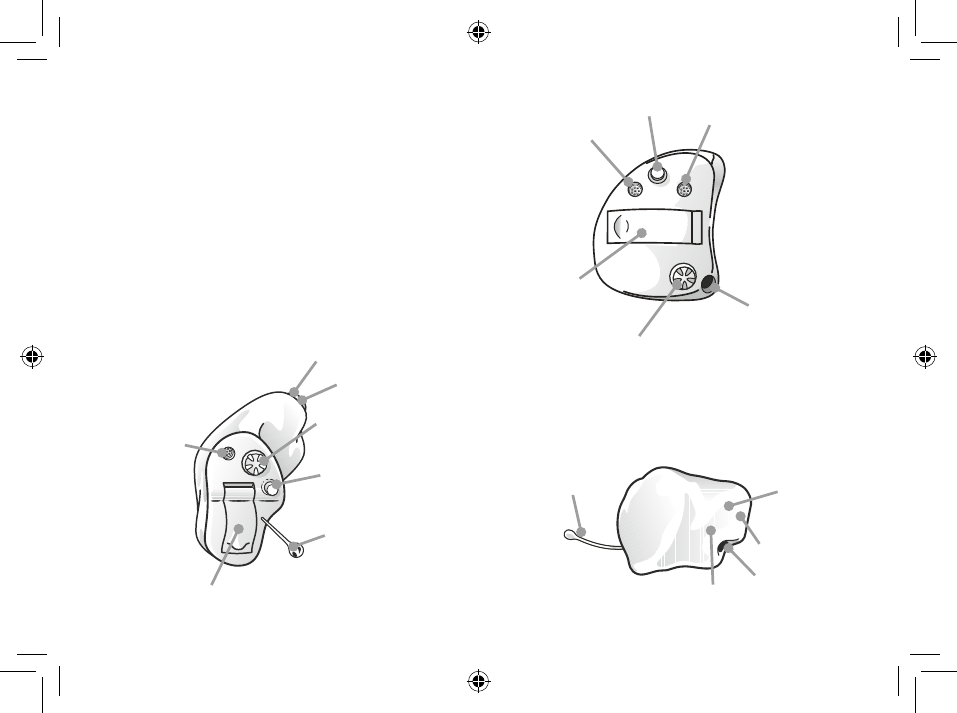
GN ReSound
ReSound Verso
XXXXXXX
11
1. Programme button (optional)
2. Battery compartment and On/Off switch
3. Removal cord (optional)
4. Sound outlet
5. Wax filter
6. Vent
7. Microphone sound inlet(s)
8. Volume control (optional)
9. Model
10. Manufacturer
11. Serial number
17
7
6
8
2
9
10
11
3
6
2
7
4
8
1
3
5
400332000-GB-14.10-Rev.A.indd 11 19-11-2014 12:48:26

12
In-the-ear (ITE) hearing instruments (including
type DA13i with FCC ID X26DA13I, IC number
6941C-DA13I models designated by a “W”) with
size 13 battery are available in the following
variants:
LS9ITE-DW UP, LS9ITE-DW HP,
LS9ITE-DW MP, LS9ITE-D UP, LS9ITE-D HP,
LS9ITE-D MP, LS9ITE-W UP, LS9ITE-W HP,
LS9ITE-W MP, LS9ITE UP, LS9ITE HP,
LS9ITE MP, LS7ITE-DW UP, LS7ITE-DW HP,
LS7ITE-DW MP, LS7ITE-D UP, LS7ITE-D HP,
LS7ITE-D MP, LS7ITE-W UP, LS7ITE-W HP,
LS7ITE-W MP, LS7ITE UP, LS7ITE HP,
LS7ITE MP, LS5ITE-DW UP, LS5ITE-DW HP,
LS5ITE-DW MP, LS5ITE-D UP, LS5ITE-D HP,
LS5ITE-D MP, LS5ITE-W UP, LS5ITE-W HP,
LS5ITE-W MP, LS5ITE UP, LS5ITE HP,
LS5ITE MP
400332000-GB-14.10-Rev.A.indd 12 19-11-2014 12:48:27
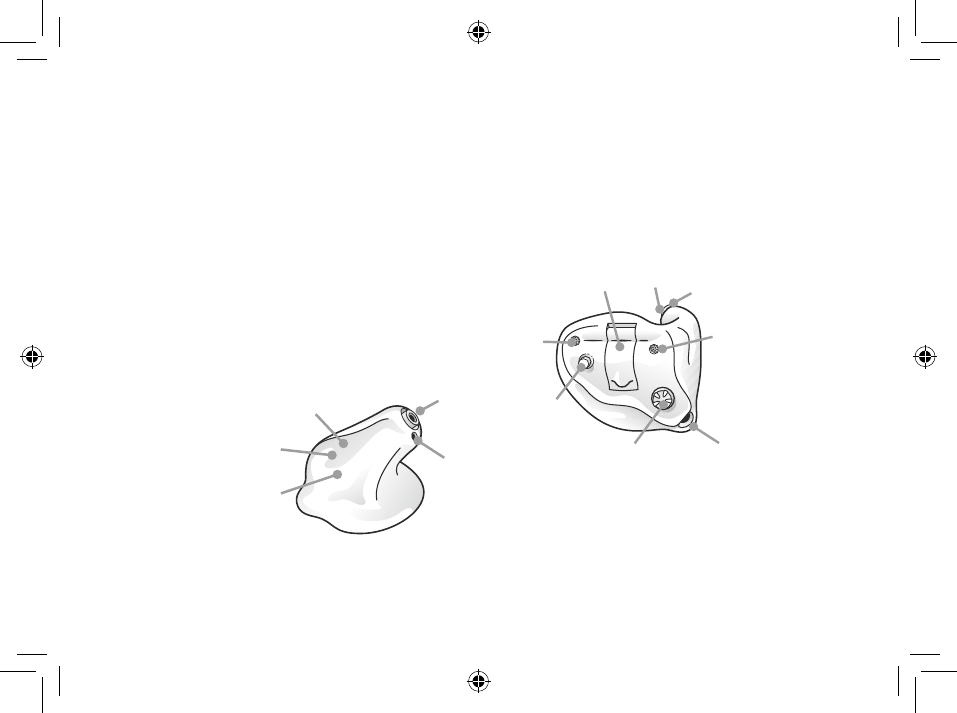
13
1. Programme button (optional)
2. Battery compartment and On/Off switch
3. Sound outlet
4. Wax filter
5. Vent
6. Microphone sound inlet(s)
7. Volume control (optional)
8. Model
9. Manufacturer
10. Serial number
6
23
7
1
6
5
4
GN ReSound
ReSound Verso
XXXXXXX
10
9
8
5
4
400332000-GB-14.10-Rev.A.indd 13 19-11-2014 12:48:27
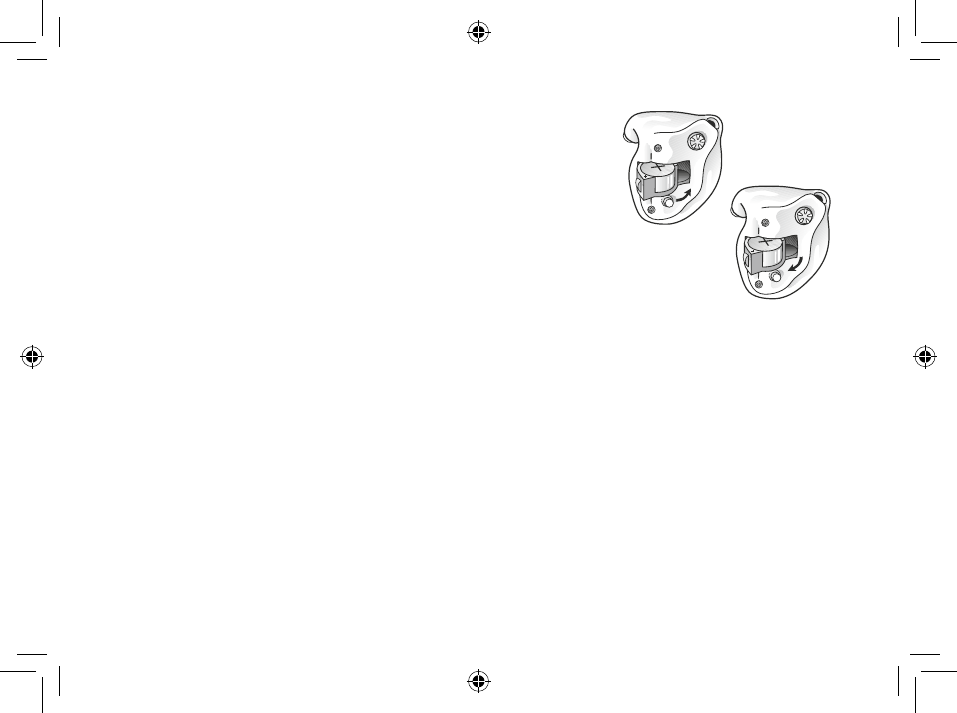
14
Getting started
On/Off function
1. When the battery door is closed, the hearing instrument
will turn on, and the default program will be activated.
2. To turn the hearing instrument off, open the battery door.
Many individuals can use their fingernail to pull it open.
i Tip: Whenever the hearing instruments are not in use, remember to open the
battery doors to avoid unnecessary battery consumption.
SmartStart
Hearing instruments can be turned on once you have placed them on your ears. If you
prefer to turn them on just prior to placing them in your ears, your hearing care profes-
sional can activate a function called SmartStart. This function will delay the time in which
the hearing instruments turn on by several seconds after the battery compartment is
closed. With SmartStart, a beep will be heard for each second of the delay period.
On
Off
400332000-GB-14.10-Rev.A.indd 14 19-11-2014 12:48:28
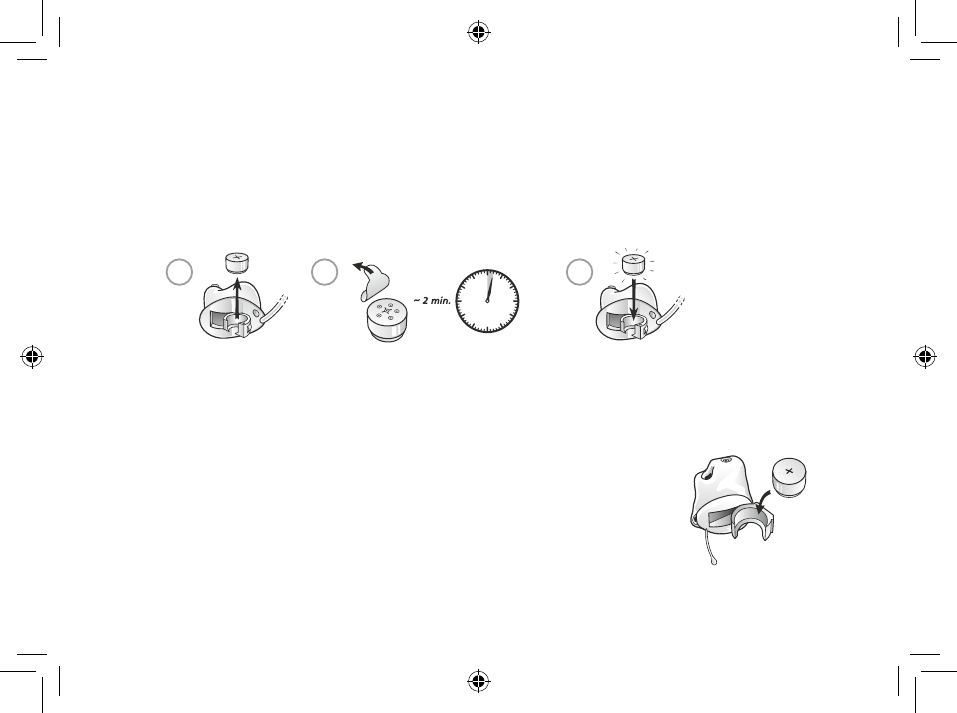
1 2 3
15
Inserting/Replacing the battery
1. Open the battery door completely by using your fingernail. Remove the used battery if present.
2. Prepare the new battery (Please ask your hearing care professional what battery size is used for your
hearing instrument). Remove the protective foil and wait 2 minutes before inserting the battery into the
hearing instrument to allow activation of the battery.
3. Insert the new battery with the positive side in the correct position.
4. Gently close the battery door.
i Tip:
1. Always use new Zinc-Air batteries that have a minimum remaining shelf life of 1 year.
2. Whenever the hearing instruments are not in use, remember to turn
them off to avoid unnecessary battery consumption.
400332000-GB-14.10-Rev.A.indd 15 19-11-2014 12:48:30

16
Low battery indicator
Your hearing care professional can activate a low battery indicator in your hearing instruments. The hear-
ing instrument will reduce amplification and emit a beep signal if battery power gets too low. This signal
will recur every 15 minutes until the hearing instrument automatically switches off. The low battery indicator
can vary slightly, depending on the type of battery used. It is recommended that you keep spare batteries
on hand.
Low battery indicator when paired with wireless accessories only
Active usage of the ReSound Unite accessories (Remote Control 2, Phone Clip+, TV Streamer 2 and Mini
Microphone) requires more battery power from the hearing instruments than when these are working
without accessories which means that battery life is highly dependent on the amount of wireless acces-
sory usage. When the battery in the hearing instrument has depleted to a level at which use of the ReSound
Unite TV Streamer 2, Phone Clip+ and Mini Microphone cannot be supported, the hearing instrument will
play two sets of descending tones.
After this, your hearing instrument and ReSound Unite Remote Control 2 will continue to work as usual, but
you will not be able to use your ReSound Unite TV Streamer 2, Phone Clip+ and Mini Microphone. At some
point the battery level will also be too low to support the remote control as well and you will once again
hear the descending tones. The hearing instruments will continue to work as usual. Once a new battery is
inserted, full operation of the accessories will resume.
400332000-GB-14.10-Rev.A.indd 16 19-11-2014 12:48:30

17
Inserting/Removing hearing instruments
Insertion (Mic in Helix)
1. Hold the hearing instrument between your thumb and index finger,
either above and below or on the sides.
2. Place the sound outlet portion into your ear canal. Turn the top part of
the earmould gently backwards and forwards so that it tucks behind
the fold of skin above your ear canal.
3. Insert the hearing instrument into your ear canal. Opening and closing
your mouth may ease insertion.
4. Gently push the microphone into the creased area of the ear that is
located above the microphone entrance, and make sure the tubing is
in place.
400332000-GB-14.10-Rev.A.indd 17 19-11-2014 12:48:30
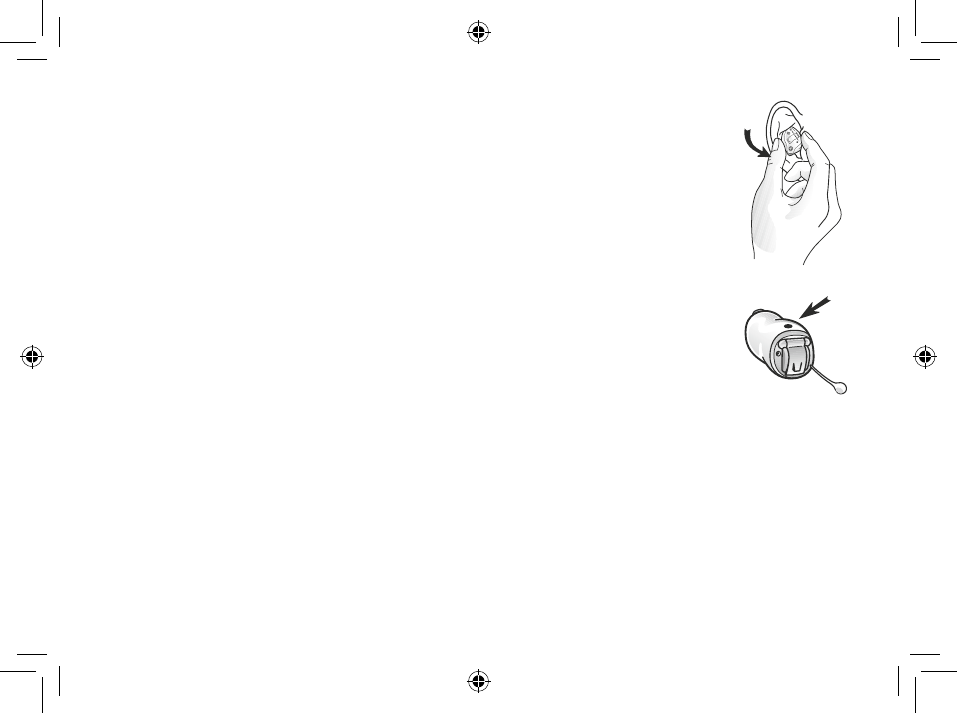
18
Insertion (IIC, CIC, ITC, and ITE)
1. Hold the hearing instrument between your thumb and index finger, either above
and below or on the sides. For IIC, there is a dot on the top side of the shell to show
orientation for insertion.
2. Place the sound outlet portion into your ear canal. Turn the top part of the hearing
instrument gently backwards and forwards so that it tucks behind the fold of skin
above your ear canal.
3. Insert the hearing instrument into your ear canal. Opening and closing your mouth
may ease insertion.
By experimenting, an easier method may be discovered. With proper insertion, hearing
instruments should fit snugly but comfortably. If the hearing instruments cause irritation
of the ears, contact your hearing care professional.
i Never attempt to modify the shape of the hearing instrument yourself.
i Tip: It may be helpful to pull your ear up and outward with your opposite hand during insertion.
IIC
400332000-GB-14.10-Rev.A.indd 18 19-11-2014 12:48:31
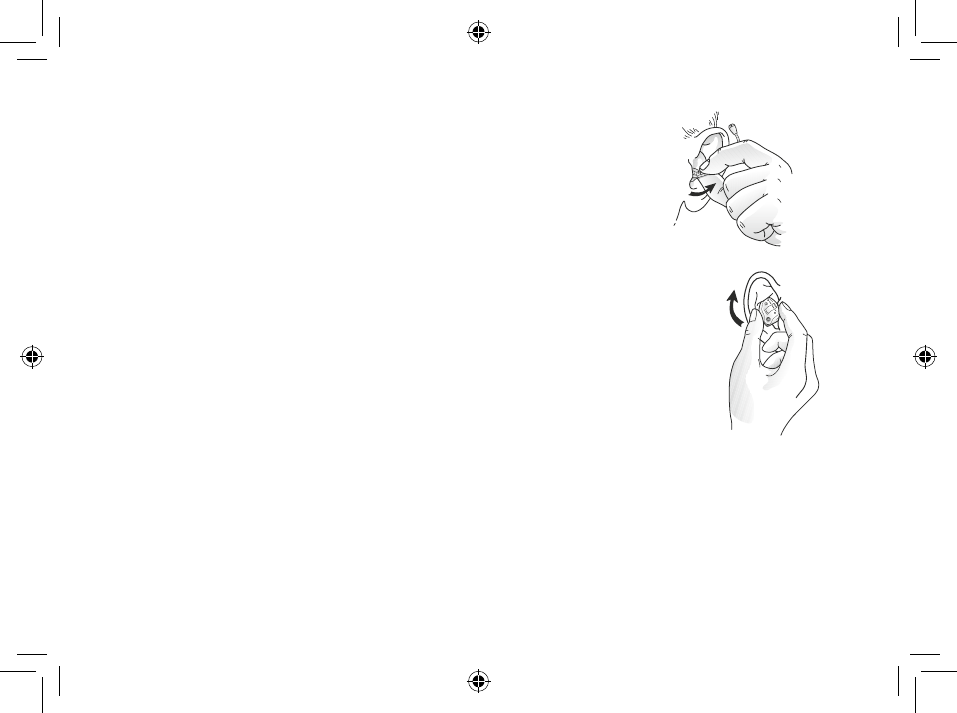
19
Removal options (IIC, CIC and Mic in Helix)
1. Hold the removal cord with your thumb and index finger and pull outward.
2. Hold the edges of the hearing instrument with your thumb and forefinger
and pull outward while slightly rotating your hand forward.
3. If Mic in Helix hearing instruments do not have a removal cord, gently pull
outward with the microphone tubing.
Removal (ITC and ITE)
1. Hold the edges of the hearing instrument with your thumb and forefinger.
2. Pull outward while slightly rotating your hand forward.
i Note: Consult your hearing care professional if you have difficulty removing
the hearing instruments.
400332000-GB-14.10-Rev.A.indd 19 19-11-2014 12:48:31
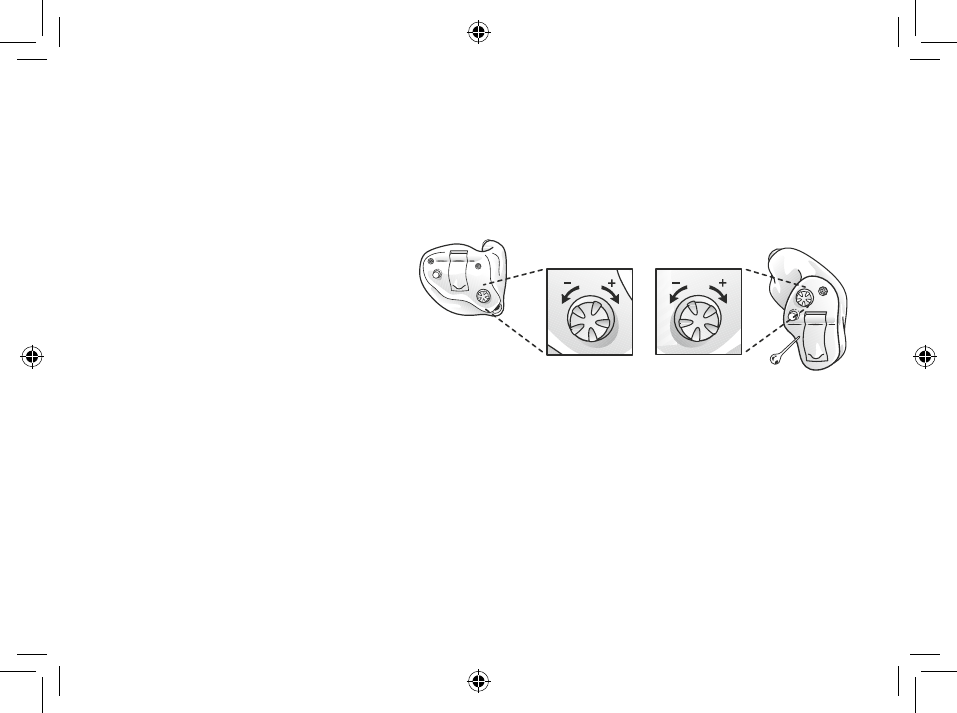
20
Operation of the hearing instrument
Volume control (Optional)
The volume control will allow the volume of hearing instruments to be increased or decreased.
1. To increase the volume, rotate the volume control forward (towards your face when you are wearing the
hearing instruments).
2. To decrease the volume, rotate the volume control backward (away from your face).
When volume is increased or decreased,
a beep signal will be heard for each incre-
mental change. When the upper or lower
limits of the volume range are reached, a
beep signal with a longer duration will be
heard.
400332000-GB-14.10-Rev.A.indd 20 19-11-2014 12:48:32
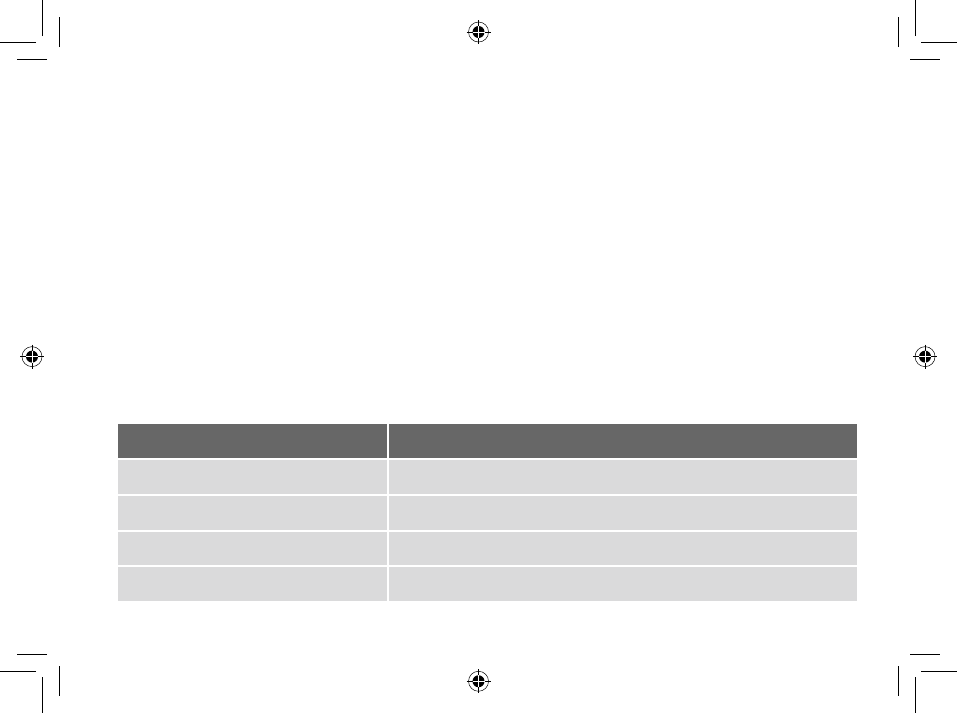
21
Programme button (Optional)
Depending on your experience level with hearing instruments, individual hearing needs, and the type of
listening environments you experience, your hearing care professional may activate additional programmes
in the hearing instrument. If additional programmes have been activated, the following list explains how
they work.
1. You can switch between programmes by pushing the push button once.
2. You will then hear one or more beeps. The number of beeps indicates which programme you have
selected (one beep=programme one, two beeps=programme two, etc.).
3. When the hearing instruments are turned off and then back on, the hearing instrument always returns
to the default setting (programme one).
4. If you have two hearing instruments with the synchronization function enabled, program changes to one
instrument will automatically repeat in the second instrument. When a program change is made in one
instrument, you will hear the same amount of confirmation beeps in the second instrument.
Your hearing care professional can fill out the following table for you.
Programme Description of when to use
1
2
3
4
400332000-GB-14.10-Rev.A.indd 21 19-11-2014 12:48:32

22
i Flight mode*
When boarding a flight or entering an area where RF transmitters are prohibited, wireless functio-
nality must be deactivated, as it is not allowed to radiate radio signals during flights or in otherwise restricted
areas.
For wireless hearing instruments follow the following steps to enter and leave flight mode:
It is possible to disable wireless operation by opening and closing the battery compartment three times
within a ten second period (open-close, open-close, open-close). Your instruments will now be in flight
mode.
If the hearing instrument is in flight mode, the hearing instrument must have been operating in flight mode
for at least 10 seconds before attempting to enable wireless again. it is possible to re-enable wireless opera-
tion by opening and closing the battery door once. 10 seconds after this operation is completed, wireless
operation will begin again.
i Note: It is important to wait an additional 15 seconds after wireless function resumes before open-
ing and closing the battery compartment again for any reason. If the battery compartment is opened and
closed during this 15 second window, flight mode will resume.
* For wireless models only
400332000-GB-14.10-Rev.A.indd 22 19-11-2014 12:48:32
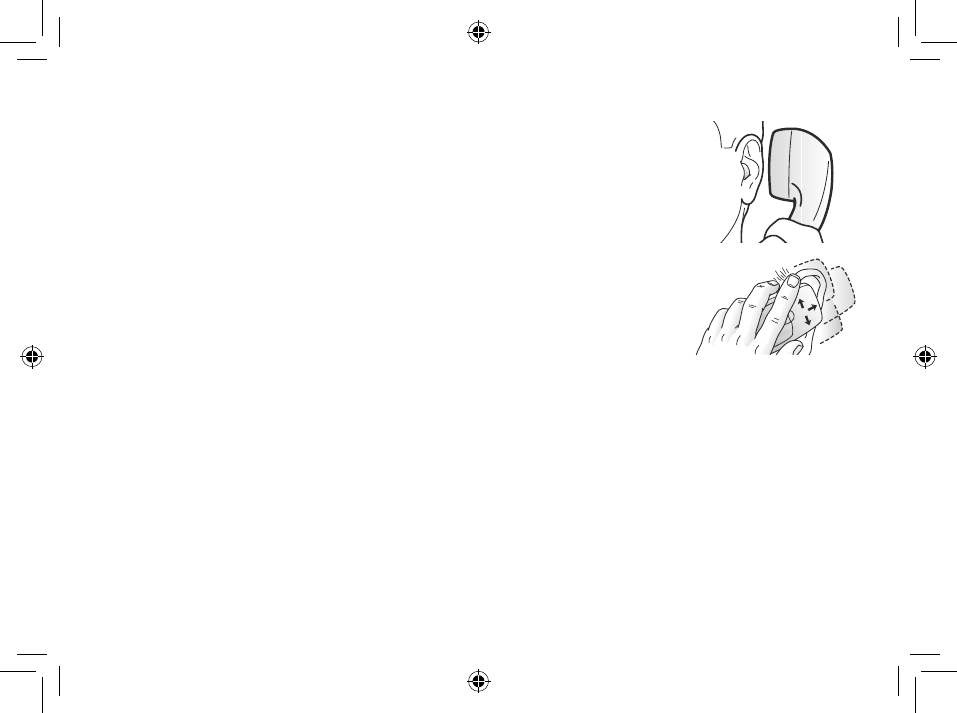
23
Telephone use
Finding the optimal position for holding a tele phone may require practice for
some individuals, and one or more of the following suggestions may be helpful.
•Hold the telephone as you would normally.
•Hold the telephone towards the top of the ear (closer to where the micro-
phones are).
•If whistling occurs, holding the tele phone in the same position may help the
hearing instrument to eliminate the feedback.
•Any whistling may also be decreased by holding the telephone slightly away
from the ear.
•Depending on your individual needs, your hearing care professional may
activate a programme specifically for telephone use.
Telecoil (optional on some ITC, ITE, and Mic in Helix models)
If equipped, a telecoil can be activated by your hearing care professional and accessed through one of
the additional programmes. A telecoil picks up a telephone’s magnetic signal and converts it to sound. An
optional telephone programme may help to improve speech understanding on the telephone. When using
a telecoil programme, the receiver of the telephone may need to be held closer to the hearing instrument.
The handset of the telephone may need to be moved to slightly different positions in order to find the best
reception.
400332000-GB-14.10-Rev.A.indd 23 19-11-2014 12:48:33

24
Listen to radio or TV
When listening to the TV or the radio, start out by listening to news commentators since they usually speak
clearly, then try other programmes.
If you find it difficult to listen to TV or radio, your hearing care professional will be able to give you advice on
available wireless accessories to enhance your listening capabilities for TV and radio.
Using ReSound hearing instruments with smart phone apps
iIntended use of smart phone apps:
GN ReSound smart phone apps are intended to be used with GN ReSound wireless hearing aids. GN Re-
Sound smart phone apps send and receive signals from the GN ReSound wireless hearing aids via smart
phones for which the apps have been developed.
Use with smart phone apps:
•Notifications of app updates should not be disabled, and it is recommended that the user installs all
updates to ensure that the app will function correctly and will be kept up to date.
•The app must only be used with GNR devices for which it is intended, and GNR take no responsibility if
the app is used with other devices.
•If you would like a printed version of the user guide for a smart phone app please consult customer
support or our website to obtain a printed user guide.
Using ReSound Hearing Instruments with iPhone®, iPad®, and iPod touch®
ReSound LiNX2 is a Made for iPhone instrument and allows for direct communication and control with an
iPhone, iPad, or iPod touch. For assistance in pairing and using these products with your ReSound LiNX2
400332000-GB-14.10-Rev.A.indd 24 19-11-2014 12:48:33
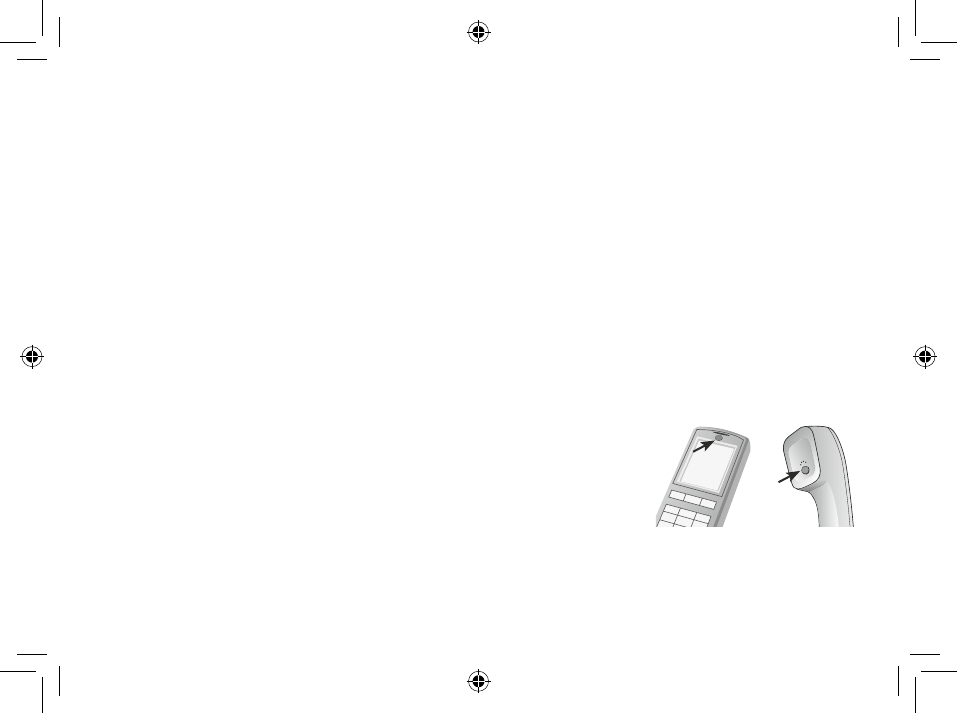
25
wireless device, please contact your hearing care professional.
Cellular phones
Your hearing instrument is designed to comply with the most stringent Standards of International
Electromagnetic Compatibility. However, not all cell phones are hearing instrument compatible. The vary-
ing degree of disturbance can be due to the nature of your particular cellular phone or of your wireless
telephony service provider.
If you find it difficult to obtain a good result while using your cellular phone, your hearing care professional
will be able to give you advice on available wireless accessories to enhance listening capabilities.
PhoneNow (not available in IIC instruments)
The PhoneNow function, allows your hearing instrument to automatically switch to your tele phone pro-
gramme when a telephone receiver is raised to the ear. When the telephone receiver is removed from the
ear, the hearing instrument automatically returns to the previous listening programme.
Placement of PhoneNow magnets
Place PhoneNow magnet on your telephone receiver to allow operation of
the PhoneNow function. In order to place PhoneNow magnet properly:
1. Clean the telephone receiver thoroughly.
2. Hold the telephone vertically, in a position similar to when making a
telephone call.
3. Place the magnets just below the telephone receiver. Make sure not to cover the microphone openings.
If necessary, move the magnet to another position to improve ease of use and comfort while speaking.
4. If you are not satisfied with the strength of PhoneNow, you can reposition the PhoneNow magnet or
add additional PhoneNow magnets.
400332000-GB-14.10-Rev.A.indd 25 19-11-2014 12:48:33

26
i Only use recommended cleaning agent to clean the telephone prior to placing the magnet on the
phone in order to obtain best possible adherence.
PhoneNow usage
Telephones can be used in a normal manner. A short melody will indicate that the PhoneNow feature has
automatically switched the hearing instrument to your telephone programme. Initially, you may need to
move the telephone receiver slightly to find the best position for reliable PhoneNow activation and good
hearing on the telephone.
i PhoneNow warnings
1. Keep magnets out of reach of pets, children and individuals who are mentally challenged. If a magnet
is swallowed, please seek advice from a medical practitioner.
2. The magnet may affect some medical devices or electronic systems. The manufacturer of any
magnetically sensitive devices (e.g. pacemakers) should advise you regarding appropriate safety
precautions when using your hearing instrument and magnet in close proximity to the medical device
or electronic system in question.If the manufacturer cannot issue a statement, we recommend keeping
the magnet or a telephone equipped with the magnet 30 cm (12”) away from magnetically sensitive
devices (e.g. pacemakers).
i PhoneNow precautions
1. High distortion during dialing or phoning may mean that the magnet is not in the optimal position relative
to the telephone receiver. To avoid the issue, please move the magnet to another place on the telephone
receiver.
2. Only use magnets supplied by ReSound.
400332000-GB-14.10-Rev.A.indd 26 19-11-2014 12:48:33

27
Tele-loop systems
Many places, such as theatres, houses of worship, and schools are equipped with tele-loop systems. When
using a telecoil programme with tele-loop systems, sound is picked up directly and may improve speech
understanding. If there is no sound from the hearing instruments in a tele-loop system and with a telecoil
programme activated, the tele-loop system may not be turned on or is not operating correctly. If a facility is
not equipped with a tele-loop system, sitting as close as possible to the front may be helpful.
i Care and maintenance
Please follow the following instructions to prolong the durability of your hearing instruments:
1. Keep your hearing instrument clean and dry. Wipe the case with a soft cloth or tissue after use to remove
grease or moisture. Do not use water or solvents, as these can damage the hearing instrument(s).
2. Never immerse hearing instruments in water or other liquids, as liquids may cause permanent damage
to the hearing instruments.
3. Avoid rough handling of hearing instruments or dropping them on hard surfaces or floors.
4. Do not leave hearing instruments in or near direct heat or sunlight, such as in a hot, parked car, as
excessive heat can cause damage or deform the casing.
5. Do not wear your instrument while showering, swimming, in heavy rain or in a moist atmosphere such
as a steam bath or sauna.
6. If your instrument does get wet, or if it has been exposed to high humidity or perspiration, it should be
left to dry out overnight with the battery out and the battery compartment open. It is also a good idea to
put the instrument and battery in a sealed container together with a drying agent (desiccator) overnight.
Do not use the instrument until it is completely dry. Consult your hearing care professional as to which
drying agent to use.
7. Remove your hearing instrument when applying such things as cosmetics, perfume, aftershave, hair
spray, and suntan lotion. These might get into the instrument and cause damage.
400332000-GB-14.10-Rev.A.indd 27 19-11-2014 12:48:33

28
i Daily maintenance
It is important to keep your hearing instrument clean and dry. On a daily basis, clean the hearing instru-
ments using a soft cloth or tissue. Remove any wax or debris from hearing instruments using a brush and/
or a wire loop. In order to avoid damage due to humidity or excessive perspiration, the use of a drying kit
is recommended.
Replacing wax filters
Custom hearing instruments may have wax filters that protect against wax and moisture. It is recom-
mended that these are changed as needed.
For changing HF3 wax filters, the following steps are needed:
1. Brush the sound outlet area with the sound outlet pointed down.
2. Insert the threaded end of the wax filter tool into the used wax filter, and gently rotate clockwise.
3. Gently pull until the used filter is removed.
4. Discard the used filter in the slot located in the wax filter kit by pressing it into the center, sliding it to
one end of the slot, and pull until the filter is discarded.
5. Flip the wax filter tool around, locate a new filter in the dial, and press the tip of the tool into the center
of the dial.
6. Gently pull the new filter out of the dial.
7. Align the new filter to the sound outlet.
8. Press the new filter into the opening, and simultaneously pull and rock back and forth until the new
wax filter is in place.
For changing Cerustop (white) wax filters, the following steps are needed:
1. To remove the old wax guard, insert the removal side of the wax guard tool into the used wax guard
400332000-GB-14.10-Rev.A.indd 28 19-11-2014 12:48:33

29
so that the shaft of the tool is touching the rim of the wax guard. Slowly pull the wax guard straight out.
2. To insert the new wax guard, gently press the replacement side of the wax guard tool straight into the
hole of the sound outlet until the outer ring lies flush with the outside of the receiver. Pull the tool straight
out -the new wax guard will remain in place.
i Tip: Pressing on the new filter with the flat side of the wax filter tool can ensure that the filter is correctly
in place.
i Note: If a different type of wax filter is used for your hearing instruments, or if your hearing instruments
do not use wax filters, consult your hearing care professional for guidance.
i Use only original ReSound consumables e.g. wax filters.
i General precautions
1. When wireless function is activated, the device uses low-powered digitally coded transmissions in
order to communicate with other wireless devices. Although unlikely, nearby electronic devices may be
affected. In that case, move the hearing instrument away from the affected electronic device.
2. When using wireless functionality and the devices are affected by electromagnetic interference, move
away from the source.
3. Only connect ReSound hearing instruments to ReSound accessories intended and qualified to be used
with ReSound hearing instruments.
4. Never attempt to modify the shape of the hearing instrument, ear-moulds, or tubing yourself.
5. For use of wireless functionality only use ReSound Unite accessories. For further guidance please refer
to the user guide of the relevant ReSound Unite accessory.
400332000-GB-14.10-Rev.A.indd 29 19-11-2014 12:48:33

30
i General warnings
1. Special care should be exercised in selecting and fitting a hearing instrument(s) who’s maximum sound
pressure level exceeds 132 dB SPL (with an IEC 60711:1981 occluded ear simulator), because there
may be a risk of impairing the remaining hearing of the hearing instrument user.
2. Consult a hearing care professional if you discover a foreign object in your ear canal, if you experience
skin irritation, or if excessive ear wax accumulates with the use of the hearing instrument.
3. Different types of radiation, for example, from NMR, MRI or CT scanners, may damage hearing
instruments. It is recommended not to wear hearing instruments during these or other similar procedures.
Other types of radiation, such as burglar alarms, room surveillance systems, radio equipment, mobile
telephones, contain less energy and will not damage hearing instruments. However, they have the
potential to momentarily affect the sound quality or temporarily create strange sounds from hearing
instruments.
4. Do not wear hearing instruments in mines, oil fields, or other explosive areas unless those areas are
certified for hearing instrument use.
5. Do not allow others to use your hearing instruments. This may cause damage to the hearing
instruments or to the hearing of the other individual.
6. Instrument usage by children or mentally challenged persons should be supervised at all times to
ensure their safety. The hearing instrument contains small parts that could be swallowed by children.
Please be mindful not to leave children unsupervised with this hearing instrument.
7. Hearing instruments should be used only as prescribed by your hearing care professional. Incorrect
use may result in hearing loss.
8. If device is broken, do not use.
9. Be careful when boarding flights, to remember to deactivate the wireless functionality. Turn off your
wireless functionality by using the flight mode in areas where radio frequency emission is prohibited.
400332000-GB-14.10-Rev.A.indd 30 19-11-2014 12:48:33

31
10. Keep magnets out of reach of pets, children and individuals who are mentally challenged. If a magnet
is swallowed, please seek advice from a medical practitioner.
11. External devices connected to the electrical input must be safe according to the requirements of IEC
60601-1-1, IEC 60065, or IEC 60950-1, as appropriate (wired connection, f.ex. HI-PRO), SpeedLink).
i Note:
• ReSound wireless devices operate in the frequency range of 2.4 GHz - 2.48 GHz.
• ReSound wireless devices include a RF transmitter that operates in the range of 2.4 GHz - 2.48 GHz.
• For use of wireless functionality only use ReSound Unite accessories. For further guidance regarding
e.g. pairing, please refer to the user guide of the relevant ReSound Unite accessory.
400332000-GB-14.10-Rev.A.indd 31 19-11-2014 12:48:33

32
Tinnitus Sound Generator (TSG) module
Intended use for the TSG module
Your ReSound hearing instruments may also include the Tinnitus Sound Generator function, a tool for
generating sounds to be used in tinnitus management programmes to relieve suffering from tinnitus. The
Tinnitus Sound Generator can generate sounds adjusted to the specific therapeutic needs and your per-
sonal preference as determined by your doctor, audiologist, or hearing care professional. Depending on
the selected hearing instrument program and the environment you are in, you will sometimes hear the
therapeutic sound resembling a continuous or fluctuating whistling.
Prescription use of this TSG hearing instrument
The TSG module should be used as prescribed by your doctor, audiologist or hearing healthcare profes-
sional. In order to avoid permanent hearing damages, the maximum daily usage depends on the level of
the generated sound.
Should you develop any side effects from using the sound generator, such as dizziness, nausea, head-
aches, perceived decrease in auditory function or increase in tinnitus perception, you should discontinue
use of sound generator and seek medical evaluation.
The target population is primarily the adult population over 18 years of age. This product may also be used
with children 5 years of age or older. However, children and physically or mentally challenged users will
require training by a doctor, audiologist, hearing healthcare professional or the guardian for the insertion
and removal of the hearing instrument containing the TSG module.
400332000-GB-14.10-Rev.A.indd 32 19-11-2014 12:48:33

33
Important notice for prospective sound generator users
A tinnitus masker is an electronic device intended to generate noise of sufficient intensity and bandwidth to
mask internal noises. It is also used as an aid in hearing external noises and speech.
Good health practice requires that a person with a tinnitus condition have a medical evaluation by a licensed
physician (preferably a physician who specializes in diseases of the ear) before using a sound generator.
Licensed physicians who specialize in diseases of the ear are often referred to as otolaryngologists, otologists
or otorhinolaryngologists.
The purpose of medical evaluation is to assure that all medically treatable conditions that may affect tinnitus
are identified and treated before the sound generator instrument is used.
The sound generator instrument is a tool to generate sounds to be used with appropriate counselling and/
or in a tinnitus management program to relieve patients suffering from tinnitus.
User instructions for the TSG module
Description of the device
The Tinnitus Sound Generator (TSG) module is a software tool that generates sounds to be used in tinnitus
management programmes to relieve suffering from tinnitus.
Explanation of how the device functions
The TSG module is a frequency and amplitude shaped white-noise generator. Noise signal level and fre-
quency characteristics can be adjusted to the specific therapeutic needs as determined by your doctor,
audiologist or hearing healthcare professional.
400332000-GB-14.10-Rev.A.indd 33 19-11-2014 12:48:33

34
Your doctor, audiologist or hearing healthcare professional can modulate the generated noise with the
purpose of making it more pleasant. The noise can then resemble, for example, crushing waves on a shore.
Modulation level and speed can also be configured to your likes and needs.
If your tinnitus troubles you only in quiet environments, your doctor, audiologist or hearing healthcare pro-
fessional can set the TSG Module so that it becomes audible exclusively in such surroundings. The overall
sound level can be adjusted via an optional volume control. Your doctor, audiologist or hearing healthcare
professional will review with you the need for having such a control.
TSG volume control
The sound generator is set to a specific loudness level by the hearing healthcare professional. When switch-
ing the sound generator on, the volume will have this optimal setting. Therefore, it might not be necessary
to control the volume (loudness) manually. However, the volume control provides the ability to adjust the
volume, or amount of stimulus, to the liking of the user.
The scientific concepts that form the basis for the device
The TSG module provides sound enrichment with the aim of surrounding the tinnitus sound with a neutral
sound which is easily ignored. Sound enrichment is an important component of most approaches to tin-
nitus management, such as Tinnitus Retraining Therapy (TRT). To assist habituation to tinnitus, this needs
to be audible. The ideal level of the TSG module, therefore, should be set so that it starts to blend with the
tinnitus, and so that you can hear both your tinnitus as well as the sound used.
In a majority of instances, the TSG Module can also be set to mask the tinnitus sound, so to provide tem-
porary relief by introducing a more pleasant and controllable sound source.
400332000-GB-14.10-Rev.A.indd 34 19-11-2014 12:48:34
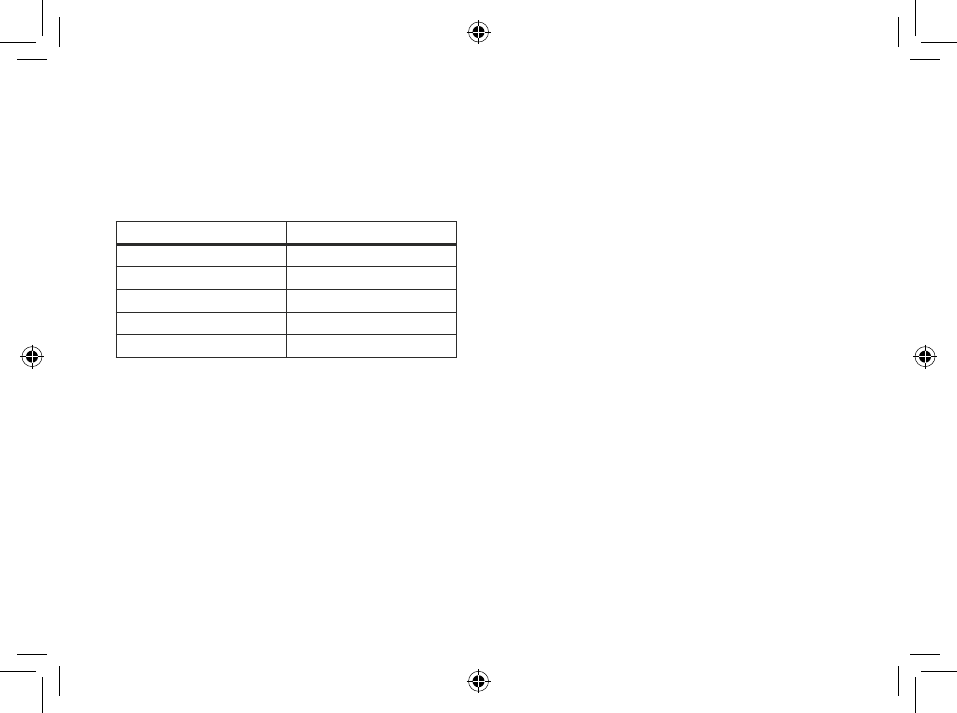
35
Technical Specifications
Audio signal technology
Digital
Available sounds
White noise signal which can be shaped with the following configurations:
High-pass filter Low-pass filter
500 Hz 2000 Hz
750 Hz 3000 Hz
1000 Hz 4000 Hz
1500 Hz 5000 Hz
2000 Hz 6000 Hz
The white noise signal can be modulated in amplitude with an attenuation depth of up to 14dB.
i TSG warnings
• Sound generators can be dangerous if improperly used.
• Sound generators should be used only as advised by your doctor, audiologist, or hearing healthcare
professional.
• Sound generators are not toys and should be kept out of reach of anyone who might cause themselves
injury (especially children and pets).
i TSG precautions
• Should the user develop any side effects from using the sound generator, such as dizziness, nausea,
headaches, perceived decrease in auditory function or increase in tinnitus perception, the user should
400332000-GB-14.10-Rev.A.indd 35 19-11-2014 12:48:34

36
discontinue use of the sound generator and seek medical evaluation.
• Children and physically or mentally challenged users will require guardian supervision while wearing the
TSG hearing instrument.
• The volume control is an optional feature in the TSG module used for adjusting the sound generator
output level. To prevent unintended usage by pediatric or physically or mentally challenged users, the
volume control must, if enabled, be configured to only provide a decrease of the sound generator output
level.
i TSG warning to hearing healthcare professionals
A hearing healthcare professional should advise a prospective sound generator user to consult promptly
with a licensed physician (preferably an ear specialist) before getting a sound generator if the hearing
healthcare professional determines through inquiry, actual observation, or review of any other available
information concerning the prospective user that the prospective user has any of the following conditions:
(i) Visible congenital or traumatic deformity of the ear.
(ii) History of active drainage from the ear within the previous 90 days.
(IIi) History of sudden or rapidly progressive hearing loss within the previous 90 days.
(iv) Acute or chronic dizziness.
(v) Unilateral hearing loss of sudden or recent onset within the previous 90 days.
(vi) Audiometric air-bone gap equal to or greater than 15dB at 500 hertz (Hz), 1000 Hz, and 2000 Hz.
(vii) Visible evidence of significant cerumen accumulation or a foreign body in the ear canal.
(viii) Pain or discomfort in the ear.
i CAUTION: The maximum output of the sound generator falls into the range that can cause hearing
loss according to OSHA regulations. The user should not use the sound generator for more than eight (8)
400332000-GB-14.10-Rev.A.indd 36 19-11-2014 12:48:34

37
hours a day when this is set below 90dB SPL. Above that level, the device should not be used for more than
two hours per day. In no case should the sound generator be worn at uncomfortable levels.
i Battery warning information
Batteries, although very small, contain dangerous substances, and should be disposed of carefully. This is
for the safety of you and the environment. Please note:
1. Do not attempt to recharge batteries (Zinc Air) which are not specifically designated as rechargeable
because they may leak or explode.
2. DO NOT attempt to dispose of batteries by burning them. Used batteries are harmful to the environment.
Please dispose of them according to local regulations or return them to your hearing care practitioner.
3. DO NOT place batteries in your mouth. Consult a physician immediately if a battery has been swallowed,
as they can be harmful to your health.
4. Keep batteries away from pets, children and individuals who are mentally challenged.
5. Remove the batteries to prevent leakage when the hearing instruments are not in use for an extended
period of time.
i Hearing instrument expectations
A hearing instrument will not restore normal hearing and will not prevent or improve a hearing impairment
resulting from organic conditions. Consistent use of the hearing instrument is recommended. In most
cases, infrequent use does not permit you to attain full benefit from it.
The use of a hearing instrument is only part of hearing rehabilitation and may need to be supplemented by
auditory training and instructions in lip-reading.
400332000-GB-14.10-Rev.A.indd 37 19-11-2014 12:48:34

38
i Warning to hearing aid dispensers (US Only)
A hearing aid dispenser should advise a prospective hearing aid user to consult promptly with a licensed
physician (preferably an ear specialist) before dispensing a hearing aid if the hearing aid dispenser de-
termines through inquiry, actual observation, or review of any other available information concerning the
prospective user, that the prospective user has any of the following conditions:
(i) Visible congenital or traumatic deformity of the ear.
(ii) History of active drainage from the ear within the previous 90 days.
(iii) History of sudden or rapidly progressive hearing loss within the previous 90 days.
(iv) Acute or chronic dizziness.
(v) Unilateral hearing loss of sudden or recent onset within the previous 90 days.
(vi) Audiometric air-bone gap equal to or greater than 15 decibels at 500 hertz (Hz), 1,000 Hz, and
2,000 Hz.
(vii) Visible evidence of significant cerumen accumulation or a foreign body in the ear canal.
(viii) Pain or discomfort in the ear.
Important notice for prospective hearing aid users (US Only)
Good health practice requires that a person with a hearing loss have a medical evaluation by a licensed
physician (preferably a physician who specializes in diseases of the ear) before purchasing a hearing aid.
Licensed physicians who specialize in diseases of the ear are often referred to as otolaryngologists, otolo-
gists or otorhinolaryngologists. The purpose of medical evaluation is to assure that all medically treatable
conditions that may affect hearing are identified and treated before the hearing aid is purchased.
400332000-GB-14.10-Rev.A.indd 38 19-11-2014 12:48:34

39
Following the medical evaluation, the physician will give you a written statement that states that your
hearing loss has been medically evaluated and that you may be considered a candidate for a hearing aid.
The physician will refer you to an audiologist or a hearing aid dispenser, as appropriate, for a hearing aid
evaluation.
The audiologist or hearing aid dispenser will conduct a hearing aid evaluation to assess your ability to hear
with and without a hearing aid. The hearing aid evaluation will enable the audiologist or dispenser to select
and fit a hearing aid to your individual needs. If you have reservations about your ability to adapt to amplifi-
cation, you should inquire about the availability of a trial-rental or purchase-option program. Many hearing
aid dispensers now offer programs that permit you to wear a hearing aid for a period of time for a nominal
fee after which you may decide if you want to purchase the hearing aid.
Federal law restricts the sale of hearing aids to those individuals who have obtained a medical evaluation
from a licensed physician. Federal law permits a fully informed adult to sign a waiver statement declining
the medical evaluation for religious or personal beliefs that preclude consultation with a physician. The
exercise of such a waiver is not in your best health interest and its use is strongly discouraged.
Children with hearing loss (US Only)
In addition to seeing a physician for a medical evaluation, a child with a hearing loss should be directed
to an audiologist for evaluation and rehabilitation since hearing loss may cause problems in language
development and the educational and social growth of a child. An audiologist is qualified by training and
experience to assist in the evaluation and rehabilitation of a child with a hearing loss.
400332000-GB-14.10-Rev.A.indd 39 19-11-2014 12:48:34
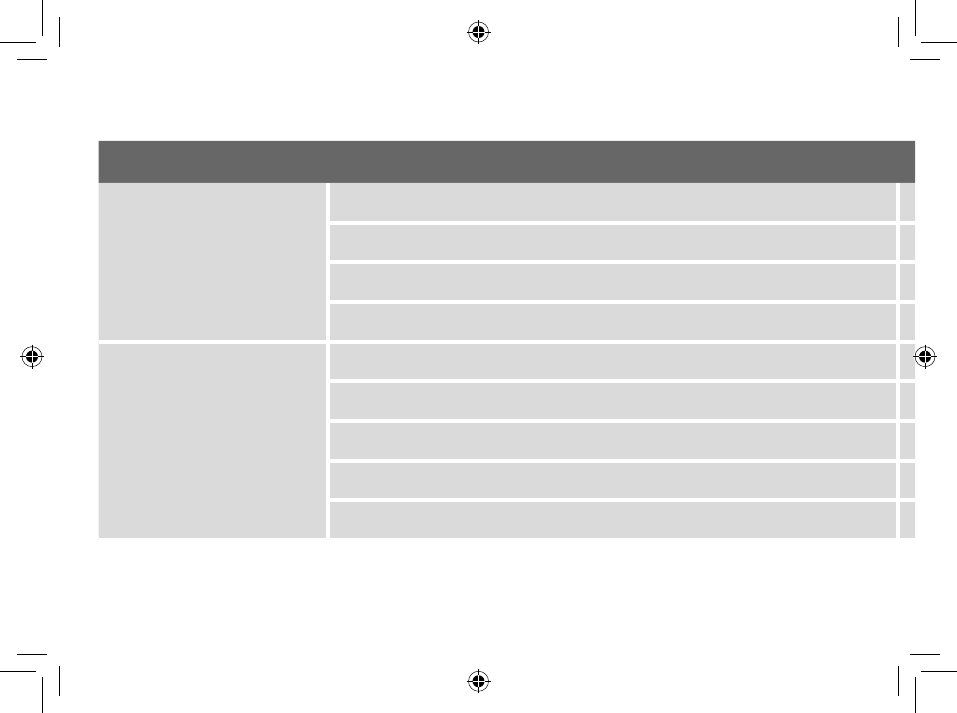
40
Troubleshooting Guide
SYMPTOM CAUSE
POSSIBLE REMEDY
No sound
Not turned on
Turn on by closing the battery door
Dead battery
Replace battery
Battery door will not close
Insert battery properly
Blocked wax filter
Replace wax filter or consult your hearing care professional
Not loud enough
Incorrect earmould placement
Reinsert hearing instrument carefully
Blocked sound outlet filter
Change filter or consult your hearing care professional
Change in hearing sensitivity
Consult your hearing care professional
Excessive ear wax
Consult your physician
Volume set too low
Increase the volume control if available or consult your hearing care professional
400332000-GB-14.10-Rev.A.indd 40 19-11-2014 12:48:34
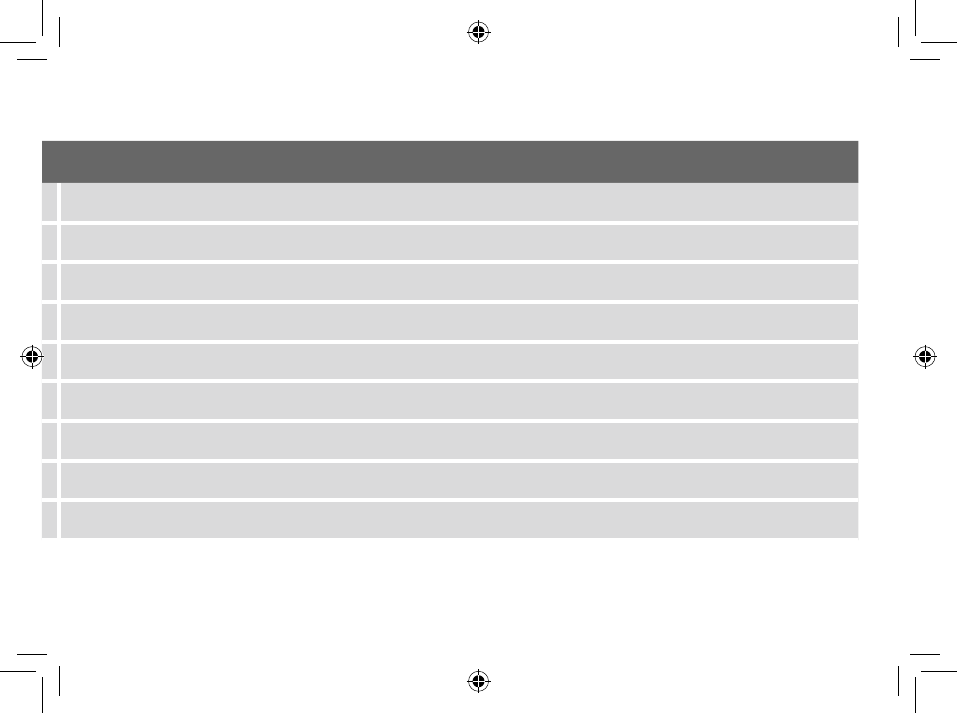
41
Troubleshooting Guide
SYMPTOM CAUSE
POSSIBLE REMEDY
No sound
Not turned on
Turn on by closing the battery door
Dead battery
Replace battery
Battery door will not close
Insert battery properly
Blocked wax filter
Replace wax filter or consult your hearing care professional
Not loud enough
Incorrect earmould placement
Reinsert hearing instrument carefully
Blocked sound outlet filter
Change filter or consult your hearing care professional
Change in hearing sensitivity
Consult your hearing care professional
Excessive ear wax
Consult your physician
Volume set too low
Increase the volume control if available or consult your hearing care professional
400332000-GB-14.10-Rev.A.indd 41 19-11-2014 12:48:34
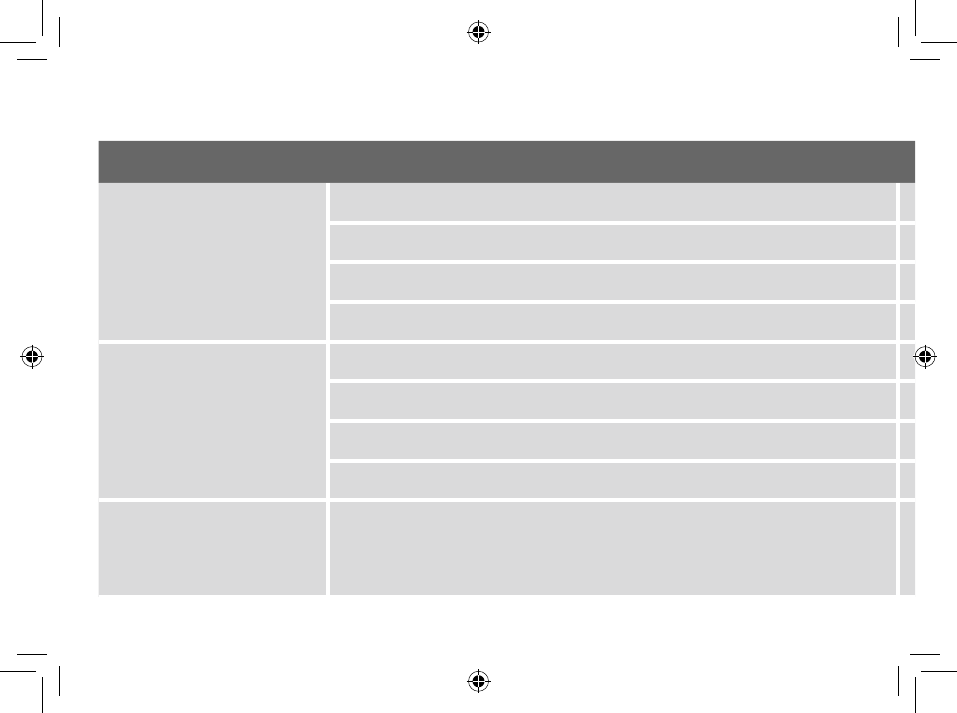
42 * If there are any other problems not mentioned in this guide, please contact your hearing care professional.
Troubleshooting Guide
SYMPTOM CAUSE
POSSIBLE REMEDY
Excessive
whistling / feedback
Incorrect custom placement in ear
Re-insert custom product carefully
Excessive ear wax
Consult your hearing care professional
Feedback control may need adjustment
Consult your hearing care professional
Hearing instrument settings not optimal
Consult your hearing care professional
Sound distorted / not clear
Weak battery
Replace battery
Improper fit
Consult your hearing care professional
Hearing instrument damaged
Consult your hearing care professional
Hearing instrument settings not optimal
Consult your hearing care professional
Wireless does not work Possible Root Cause - Device is in flight mode
Open and close the battery compartment once. Wireless will reactivate 10 seconds later. (If
Root Cause is device in flight mode)
400332000-GB-14.10-Rev.A.indd 42 19-11-2014 12:48:34
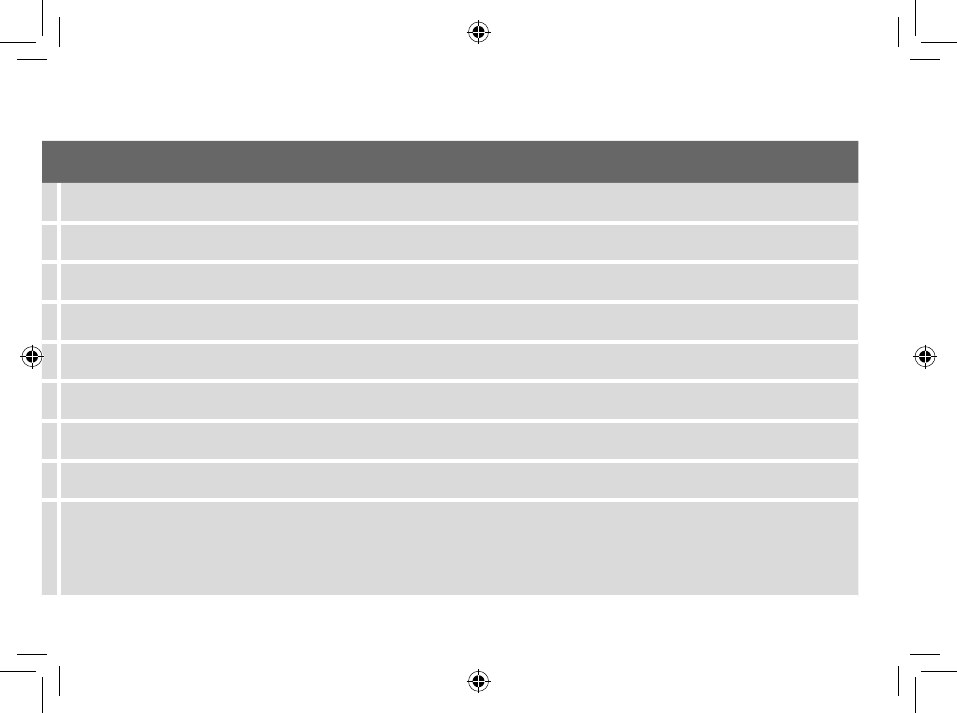
43
Troubleshooting Guide
SYMPTOM CAUSE
POSSIBLE REMEDY
Excessive
whistling / feedback
Incorrect custom placement in ear
Re-insert custom product carefully
Excessive ear wax
Consult your hearing care professional
Feedback control may need adjustment
Consult your hearing care professional
Hearing instrument settings not optimal
Consult your hearing care professional
Sound distorted / not clear
Weak battery
Replace battery
Improper fit
Consult your hearing care professional
Hearing instrument damaged
Consult your hearing care professional
Hearing instrument settings not optimal
Consult your hearing care professional
Wireless does not work Possible Root Cause - Device is in flight mode
Open and close the battery compartment once. Wireless will reactivate 10 seconds later. (If
Root Cause is device in flight mode)
400332000-GB-14.10-Rev.A.indd 43 19-11-2014 12:48:34
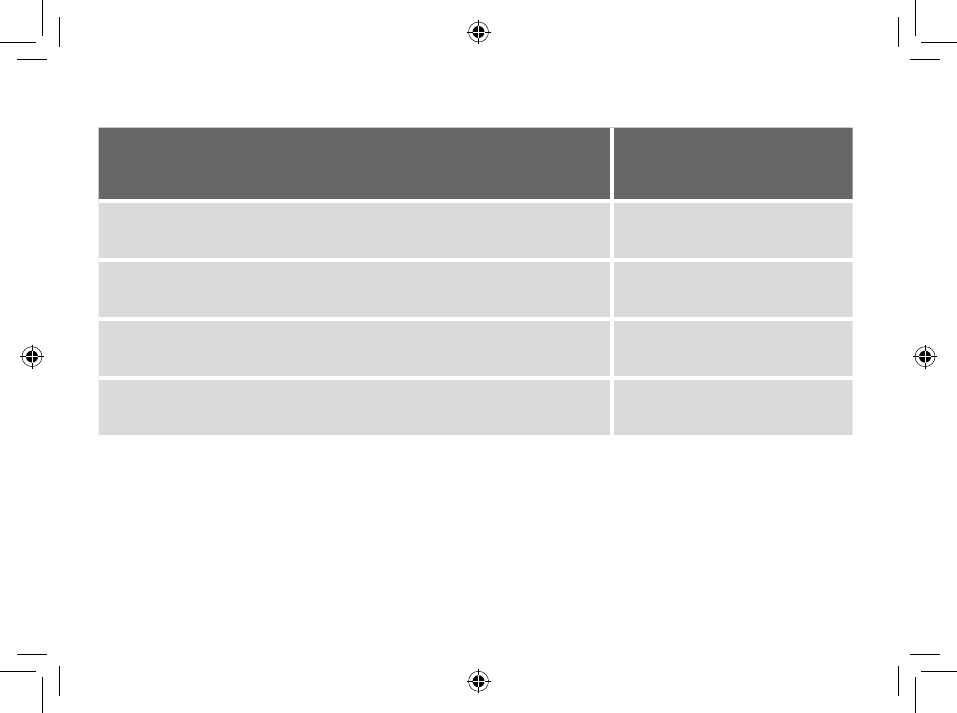
44
Technical Data
HEARING INSTRUMENT MODEL
MAXIMUM OUTPUT
(2ccCoupler / IEC 60118-7
and ANSI S3.22-2013)
All Low Power (LP) models including IIC 115 dB SPL (typical)
All Medium Power (MP) models 117 dB SPL (typical)
All High Power (HP) models 121 dB SPL (typical)
All Ultra Power (UP) models 130 dB SPL (typical)
400332000-GB-14.10-Rev.A.indd 44 19-11-2014 12:48:34

45
Warranty and repairs
ReSound provides a warranty on hearing instruments in the event of defects in workmanship or materials,
as described in applicable warranty documentation. In its service policy, ReSound pledges to secure func-
tionality at least equivalent to the original hearing instrument. As a signatory to the United Nations Global
Compact initiative, ReSound is committed to doing this in line with environment-friendly best practices.
Hearing instruments therefore, at ReSound’s discretion, may be replaced by new products or products
manufactured from new or serviceable used parts, or repaired using new or refurbished replacement
parts. The warranty period of hearing instruments is designated on your warranty card, which is provided
by your hearing care professional.
For hearing instruments that require service, please contact your hearing care professional for assistance.
ReSound hearing instruments that malfunction must be repaired by a qualified technician. Do not attempt
to open the case of hearing instruments, as this will invalidate the warranty
Temperature test, transport and storage information
GN ReSound Hearing Instruments are subjected to various tests in temperature and damp heating cycling
between -25 C and +70C according to internal and industry standards. During transport or storage, the
temperature should not exceed the limit values of -20C to 60C and relative humidity of 90% RH, non con-
densing (for limited time). The air pressure between 500 and 1100 hPa is appropriate.
400332000-GB-14.10-Rev.A.indd 45 19-11-2014 12:48:34
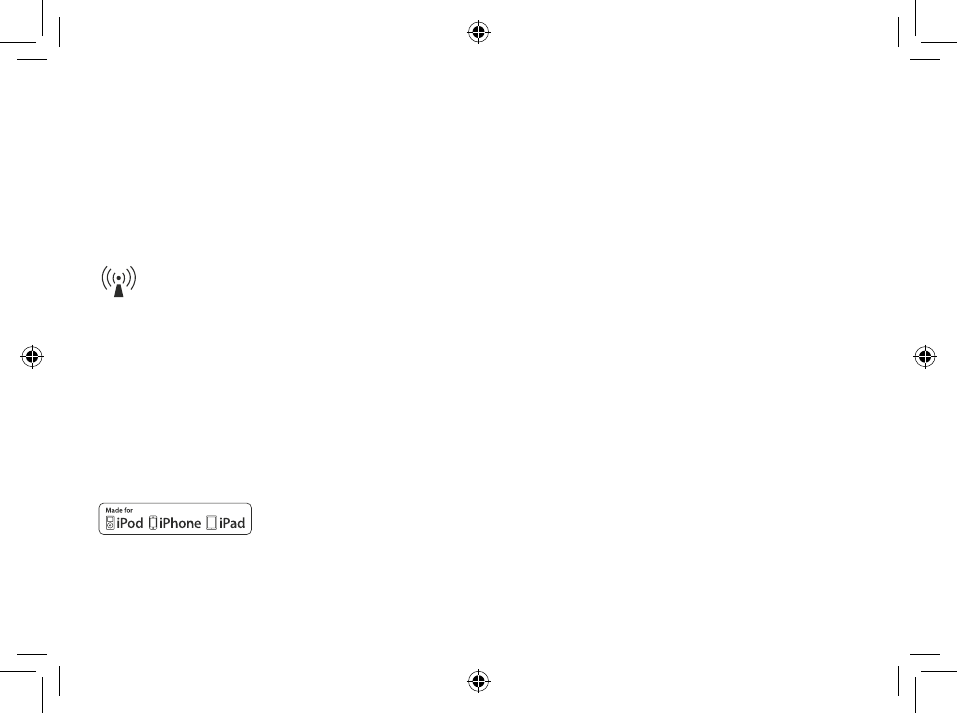
46
Be aware of information marked with the warning symbol
WARNING points out a situation that could lead to serious injuries,
i CAUTION indicates a situation that could lead to minor and moderate injuries.
i Advice and tips on how to handle your hearing instrument better.
Equipment includes RF transmitter.
i “Made for iPhone” means that an electronic accessory has been designed to connect specifically
to iPhone and has been certified by the developer to meet Apple performance standards. Apple is
not responsible for the operation of this device or its compliance with safety and regulatory stand-
ards. Please note that the use of this accessory with iPhone may affect wireless performance.
ReSound LiNX2 is compatible with iPhone 6, iPhone 6 Plus, iPhone 5s, iPhone 5c, iPhone 5, iPad Air 2, iPad Air, iPad (4th
generation), iPad mini 3, iPad mini with Retina display, iPad mini and iPod touch (5th generation) using iOS 7.X or later. Apple,
the Apple logo, iPhone, iPad and iPod touch are trademarks of Apple Inc., registered in the U.S. and other countries.
400332000-GB-14.10-Rev.A.indd 46 19-11-2014 12:48:35
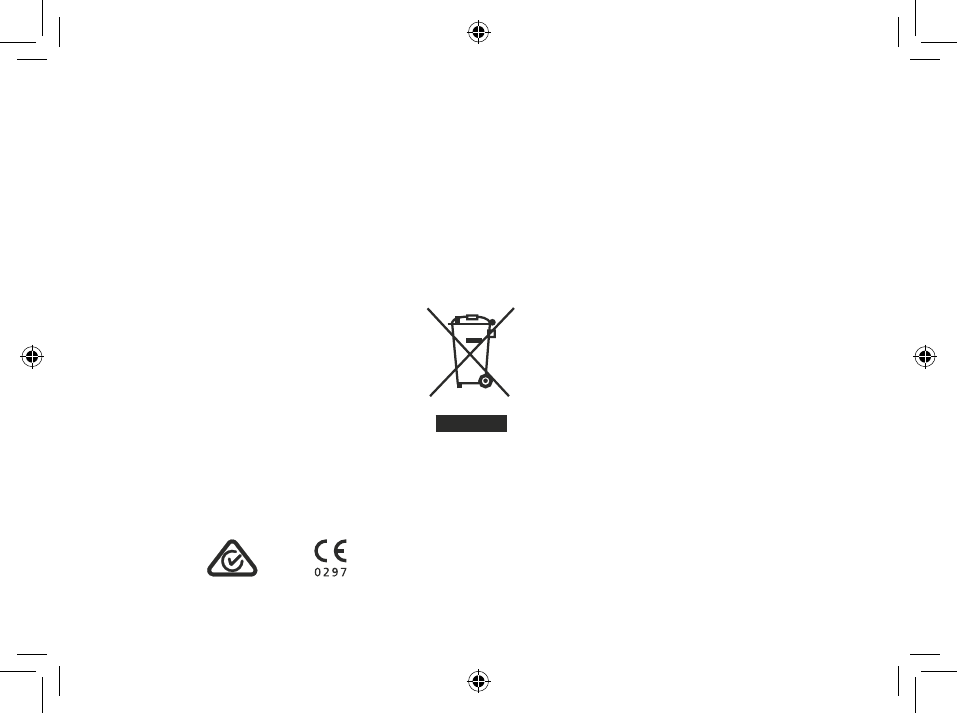
47
Please ask your local hearing care professional
concerning disposal of your hearing instrument
Any issues relating to the EU Medical Device Directive 93/42/EEC, or
Council Directive 1999/5/EC on Radio Equipment and Telecommunications
terminal equipment should be directed to ReSound A/S
Faceplate/Electronics by: ReSound A/S
400332000-GB-14.10-Rev.A.indd 47 19-11-2014 12:48:35
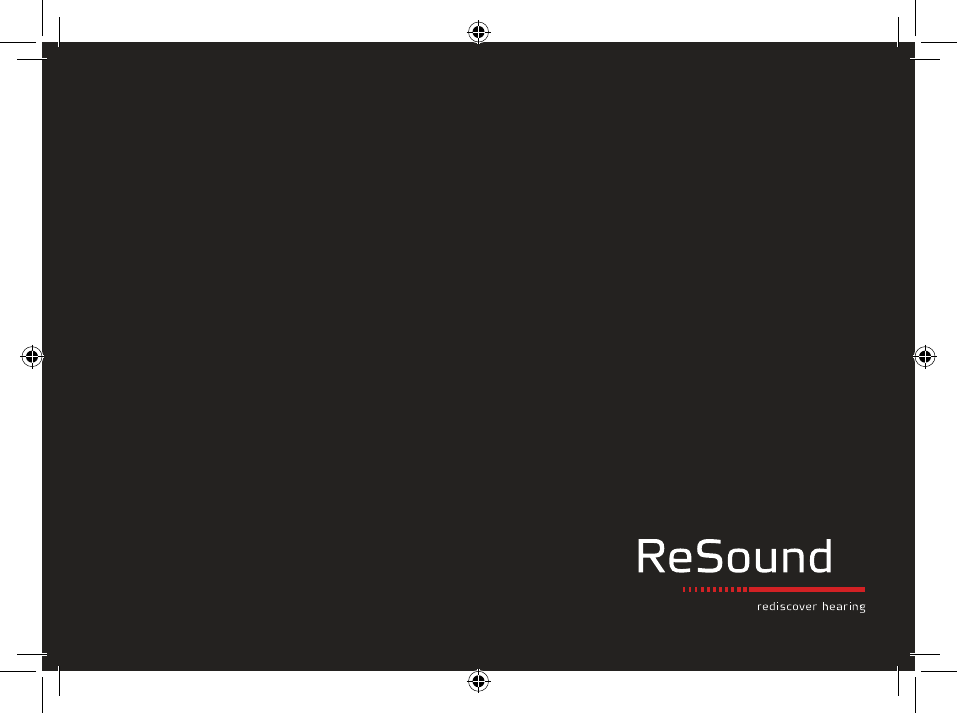
400332000-GB-14.10-Rev.A
Worldwide Headquarters
ReSound A/S
Lautrupbjerg 7
DK-2750 Ballerup, Denmark
Tel.: +45 45 75 11 11
Fax: +45 45 75 11 19
www.resound.com
CVR no. 55082715
United Kingdom
GN ReSound Ltd.
Kirtlington Business Centre
Portway
Kirtlington
Oxon OX5 3JA
Tel.: +44 1869 352 800
Fax: +44 1869 343 466
www.gnresound.co.uk
Australia
GN ReSound Pty. Ltd.
Unit R1 Regents Park Estate
391 Park Road
Regents Park NSW 2143
Tel.: (free) 1800 658 955
Fax: +61 2 9743 7472
www.gnresound.com.au
New Zealand
GN ReSound (NZ) Ltd.
Ground Floor, North Entrance
4 Fred Thomas Drive
Takapuna
Auckland, 0622
Tel.: (free) 0800 900 126
Fax: (free) 0800 007 695
www.gnresound.co.nz
400332000-GB-14.10-Rev.A.indd 48 19-11-2014 12:48:35